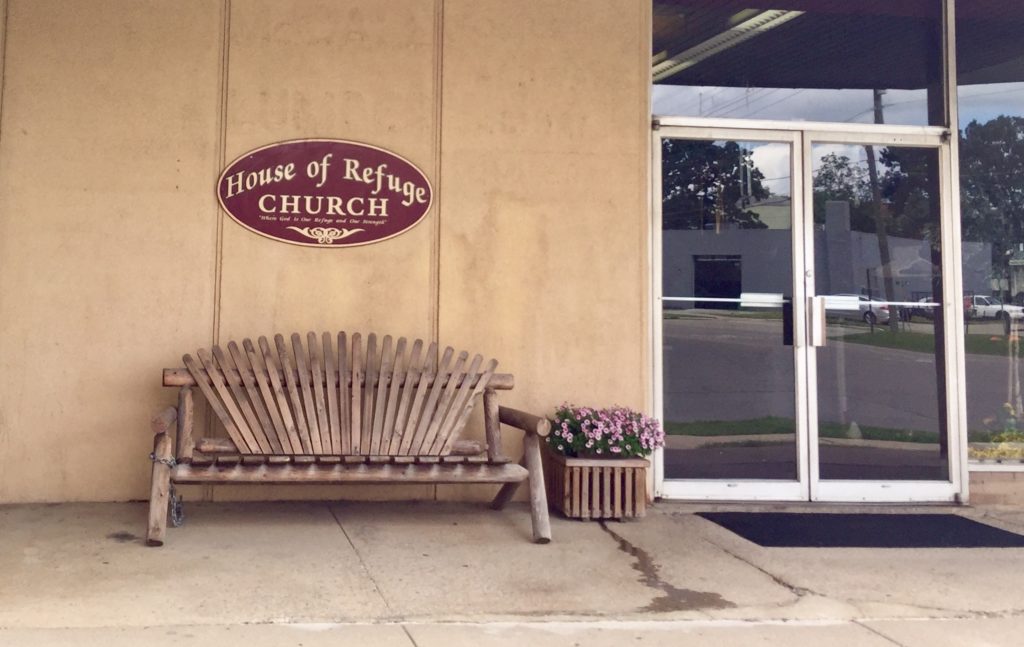
When Lorie Nichols’ phone rings, she knows that answering it might put a life in her hands.
Sometimes a call comes in the middle of the night, a last grasp at life from a suicidal person who listens to a deeper instinct, or a desperate plea for assistance from the person’s friend. A member of the Hillsdale County Suicide Prevention Coalition, Nichols talks to her callers until they’re safe, directs them to a counselor or a hotline, or calls 911.
She gets these calls about once a month, and so far, no one has died on her watch, she said. But not everyone calls; not everyone even knows they have the option.
Twelve suicides were reported in Hillsdale County in 2016, according to the Michigan Department of Health and Human Services. Three suicides have been reported since August 2017, said County Commissioner Ruth Brown. Year to year, the official numbers fluctuate: Ten suicides were reported in 2012, four in 2013, 12 in 2014.
As the country faces a growing epidemic of suicides — earlier this month, the Centers for Disease Control reported a 25.4 percent uptick in suicides from 1999-2016, and a 32.9 percent increase in Michigan — members of Hillsdale County are fighting it with preventative action in the adult community, the college, and the local schools.
The five-year moving-average number of suicides in Hillsdale County in 2012-2016, 8.6, is the highest it’s been at least since 1999-2003, according to a data page from MDHHS. Though the MDHHS lists no age-adjusted rate for the county in 2016, citing imprecise or unreliable information, the crude rate was 26.2 (out of 100,000 people) that year, down from 28.3 in 2014 but higher than any other crude rate available since 2000.
But the statistics don’t really tell the story, according to Brown, who said suicide is a serious problem in the county — and underreported.
The rates don’t account for attempts, and even successful suicides are kept off of death records, often masked by friends and relatives who are scared of shame and trauma. Brown said she knows of a woman who paid a funeral director to call her husband’s death an accident. He’d turned on the gas in the garage, and she didn’t want her children to know.
Brown herself became aware of Hillsdale’s suicide problem in 2013 when the finance commissioner showed her an increase in county autopsy expenses because of a greater number of deaths by gunshot, a telltale sign of a rising suicide rate (more than half of suicides reported in Hillsdale County from 2009-14 were committed with a firearm).
Suicide’s stigma is at the root of its perpetuation, Brown said.
Brown hit a “stone wall” when she tried to start a program in 2014 to help people struggling with suicidal inclinations, she said; no one wanted to talk about it. But she finally got the support of the Hillsdale Area Ministerial Association and founded the Hillsdale County Suicide Prevention Coalition in January 2015 with Nichols, who pastors House of Refuge Church.
The 10-member coalition tries to fight stigma by spreading awareness through lectures and brochures and providing trainings for people in the community, including the sheriff’s department.
It also fights depression, which Nichols said is one of the main contributors to suicide. On the last Tuesday of every month, the coalition hosts a depression support group that meets at Nichols’ church. About five adults come for support each week, Nichols said.
Depression and suicidal thoughts usually stem from some kind of trauma, Nichols said. Often, people struggle with family or financial issues. Brown said that in 2009, after the recession, suicides increased.
Depression doesn’t discriminate by socio-economic status, though said Brock Lutz, a member of the suicide prevention coalition and director of health and wellness at Hillsdale College. Students at the college may be, on average, in better financial straits and family situations than people in the local community, but many still struggle with depression, though perhaps for different reasons.
Of the students that the wellness center sees for counseling, about 10 percent, maybe less, have diagnosable depression, Lutz estimated. In a school year, about 4-6 students are evaluated for hospitalization. In 2005, a Hillsdale College football player committed suicide, and that left an impact on the school that sparked a desire to provide more assistance to students, Lutz said.
Students often struggle to have the right perspective, Lutz said, letting stress and difficult circumstances weigh them down.
“Sometimes students come in and think, ‘I’ve got this.’ They think that something is wrong if it’s hard,” Lutz said. “The truth is, life is full of joy, and it’s also full of pain. When life is difficult, we’ve got to figure out how to respond to that.”
Depression weighs on youth in Hillsdale’s public schools, too. In a 2015 survey conducted by Youth Opportunities Unlimited Through Hillsdale (YOUTH) at nine schools in the county, 8th- and 11th-graders reported depression to be one of the top five issues impacting them most. The other issues were bullying, pressure to achieve, low self-esteem, and not fitting in.
In the 2017-18 school year, 50 Hillsdale County 9th- and 11th-graders reported that they had attempted suicide in the past year in an online survey from the Michigan Profile for Healthy Youth. Twenty-one said they had to receive medical treatment because of their attempts.
Reports allow The Hillsdale County Community Foundation to be helpful to students, said Amber Yoder, director of community engagement at HCCF, in an email. Last October, in the Hillsdale College Roche Complex’s basketball court, YOUTH hosted mental-health speaker Mike Veny to kick off its #wontbesilent social media campaign and peer-to-peer support system for students.
At this point, one of the biggest challenges to success in fighting suicide is a stubbornness to address the issue in the community, Brown said. People tell her she’ll never be able to make a difference; there will always be suicide.
Others, Yoder said, don’t think there’s even a problem to address.
“There are some who do not believe that mental health is a serious issue affecting young people,” Yoder said. “There is sometimes an instinct to ignore it, not take it seriously, or to not talk about it.”
That’s hard when the coalition, and prevention efforts in general, need personnel most of all, Brown said. The coalition members all have other jobs; no one can devote 40-hour weeks to prevention efforts.
But attitudes and awareness appear to be changing for the better.
Even adults came to the Veny event, and not just in the gym; the speech ran on a TV station based 70 miles away, Yoder said. It encouraged schools to create peer listening teams and participate in trainings about helping suicidal people.
“[The] ripple effects of that initial presentation have been amazing,” Yoder said. “The schools that are participating in the social media campaign and the peer listening initiative have been very open and receptive to addressing the needs of young people who are struggling with emotional and mental health issues.”
At the college, the wellness center will hold 80 hours of counseling sessions per week, more than ever before, Lutz said. He’s seen demand for counseling rise in his seven years here — there were 2,100 visits this past school year — and he doesn’t attribute that to more unhealthful students so much as a falling stigma and greater awareness of services.
Brown said she’s hoping to educate leaders in the town — like the sheriff’s office and the police department — on helping suicidal people too, if the coalition can obtain the grants it needs for training materials.
She’s optimistic that the town’s attitude is shifting in a way that will help shed suicide’s stigma and encourage people to reach out, aware of the resources they have.
“It used to be around here, no one talked about suicide ever,” she said. “But things are changing.”

